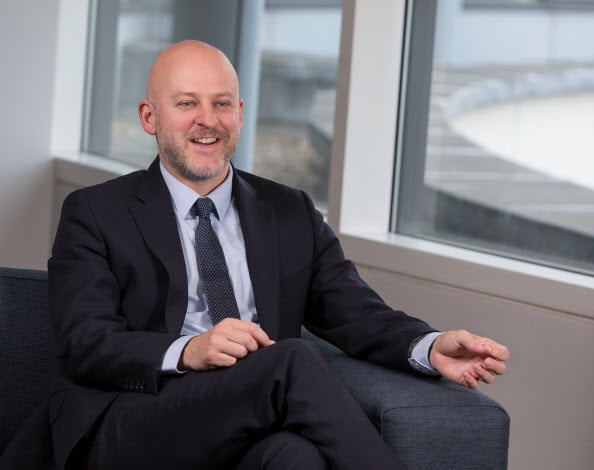Despite pronounced geopolitical and macroeconomic tremors, 2018 will go down as one of the biggest private equity fundraising years on record. Firms around the globe amassed at least $426bn, according to Preqin. Both the European and world records tumbled, with CVC raising €16bn and Apollo Global Management an astonishing $24.6bn.
And neither Brexit or international trade wars nor the prospect of climbing interest rates, have dampened the asset class’s bullishness on fundraising. The latest Investec GP Trends survey, which canvassed the opinion of around 300 private equity professionals globally, found that over half (55%) expect their next fund to be more than 25% larger than their current fund, while one in eight (12%) expect their next fund to be double its predecessor.
Indeed, at the start of 2019, there were 3,750 private equity funds in the market seeking an aggregate $977bn, the Preqin data shows. The five largest, combined, are aiming to raise a massive $219bn. And dry powder, across all forms of private capital, has surpassed the $2trn mark to reach $2.1trn.
"GPs are confident that they are going to raise bigger funds. But perhaps they are looking in the rear-view mirror in terms of how they will deploy that capital."
“Private equity, as an asset class, has been attractive over a number of years due to the low-interest-rate environment,” comments Jonathan Harvey, European Fund Finance. “It has been a very strong market for existing assets, with multiples at an all-time high, meaning investors are getting good returns and are keen to allocate more.
“As the survey shows, GPs are confident that they are going to raise bigger funds. But perhaps they are looking in the rear-view mirror in terms of how they will deploy that capital. They have been operating in a very buoyant environment from a macroeconomic point of view and that could be set to change.”

We find these bridging facilities are helping to give certainty in acquisitions or portfolio management situations where asset level debt is harder to come by in the market.
A competitve edge
Increasing fund sizes come with significant challenges in terms of deployment, resourcing and risk. Managers must either complete more deals, or bigger deals, potentially pushing themselves out of their comfort zone.
Add in significant amounts of dry powder across the asset class, cash rich corporates and sky-high pricing, coupled with escalating economic and political uncertainty, and private equity firms must make sure they can steal a lead on their rivals if they are going to deploy this capital as their investors demand. A savvy use of fund finance facilities can provide this competitive edge.
In particular, the structures that Investec is putting in place at the moment reflect an increasingly challenging debt environment at an asset level. As the clearing banks struggle with higher leveraged ratios, and credit fund debt remains expensive, innovative and flexible fund finance solutions which include borrowing at an SPV level, or with a company within the acquisition chain, allow GPs to proceed with confidence.
The prospect of an increasingly challenging environment for deploying funds, means private equity managers must also consider whether they are borrowing on a committed, or uncommitted basis.
“We find these bridging facilities are helping to give certainty in acquisitions or portfolio management situations where asset level debt is harder to come by in the market, meaning it may well be put in place at a later date,” explains Harvey. “While most bridging facilities sit with the fund as the borrower, we will happily position the fund as a guarantor, which means bridging facilities can be used in a more strategic manner.
“They can be used to support acquisitions, or portfolio management situations, which require the kind of asset-level debt that is proving increasingly difficult to competitively access in the current leverage finance banking market,” Harvey adds.
Commitment issues
The prospect of an increasingly challenging environment for deploying funds means private equity managers must also consider whether they are borrowing on a committed or uncommitted basis.
The majority of clearing banks will provide a facility equivalent to 20%, or similar, of a GPs’ commitments. Those funds are available for use at any point and, so long as the facility is being used regularly, the headline cost of finance will look attractive. But while these facilities may be well suited to a buoyant investment market, where managers are deploying at a rapid pace, they quickly become less appealing if deployment starts to dry up.
“As we look forward to a more difficult investment market due to competition; bigger funds; potential interest rate rises; uncertainty around Brexit; trade wars - all of these things that a manager can’t control - we may well see deployment rates slow down,” says Harvey.
The prospect of an increasingly challenging environment for deploying funds, means private equity managers must also consider whether they are borrowing on a committed, or uncommitted basis.
“When this happens, the facilities structured on a committed basis just add drag costs for the GP who is paying even when they are not drawing down. The headline rates may appear low but they are somewhat irrelevant if you don’t use the facility. You have got a running cost ticking up all the time regardless of use.”
Private equity firms are increasingly recognising that future deployment rates are critical when choosing a fund finance facility and that interest margins can no longer be considered the key metric in decision making. They realise that capital call funding structured on an uncommitted basis, where you only pay as and when the facility is required, represents a cost-effective option, particularly in environments where deployment is tough.
Headline rates may be higher, but with drag costs associated with traditional committed facilities omitted, the overall cost, over a five-year period, is often proven to be cheaper. Prudent GPs are building in macro downside protection for themselves, by putting this type of uncommitted master facility in place.
Download the 2022 GP Trends report
Receive Focus insights straight to your inbox




